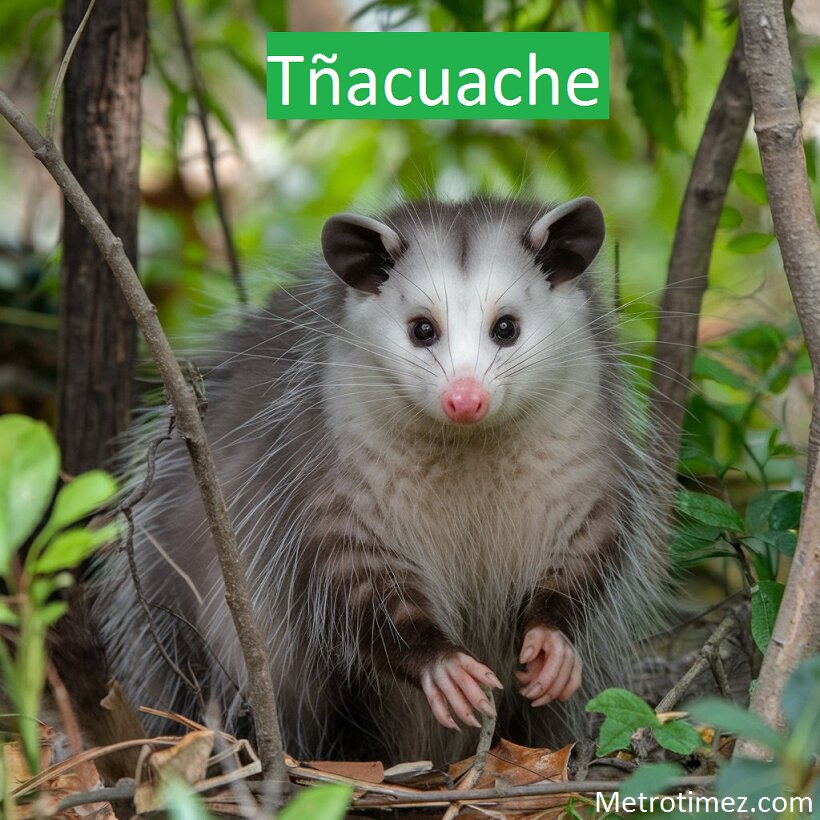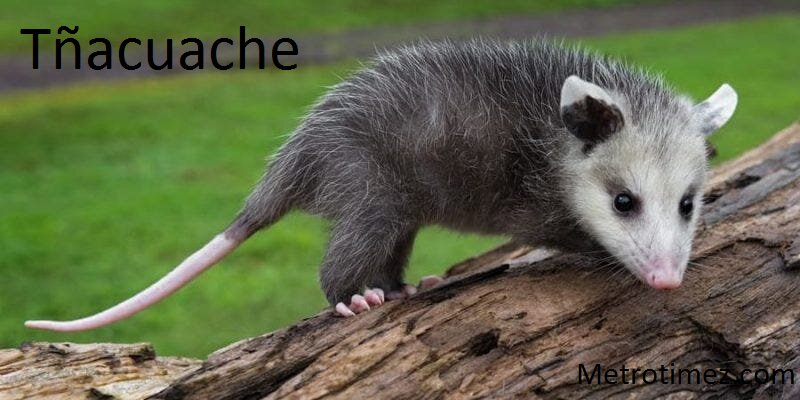
Introduction
The tñacuache, commonly known as an opossum in English, is a fascinating creature that plays a crucial role in many ecosystems. Often misunderstood and sometimes feared, the tñacuache is a resilient animal with unique traits and behaviors. In this article, we’ll explore everything you need to know about the tñacuache, from its physical characteristics to its role in the environment and its cultural significance.
What is a Tñacuache?
The word “tñacuache” has a term used in Mexico and Central America to refer to the animal known as the opossum. Scientifically, it belongs to the family Didelphidae, and it is the only marsupial found in North America. The tñacuache has adapted to a variety of environments, making it a common sight in both urban and rural areas.
Physical Characteristics of the Tñacuache
Tñacuaches are small to medium-sized animals, typically weighing between 4 to 12 pounds (1.8 to 5.4 kg). They have a distinctive appearance, with grayish-white fur, a pointed snout, and a long, hairless, prehensile tail that they use for gripping branches and carrying materials. Their ears have rounded and usually free of fur, adding to their unique look.
Natural Habitat and Distribution
Tñacuaches have incredibly adaptable and can found in a wide range of environments, from dense forests to urban settings. They have most commonly found in North and Central America, particularly in areas with access to water and food. Tñacuaches prefer habitats with plenty of cover, such as wooded areas, swamps, and fields, but they have also become adept at surviving in cities and suburbs.
Behavioral Traits of the Tñacuache

Tñacuaches are primarily nocturnal, meaning they are most active at night. They have solitary animals and are generally seen alone except during mating season or when a mother is caring for her young. Despite their solitary nature, tñacuaches are highly adaptable and can live in close proximity to humans without much conflict.
Diet of the Tñacuache
Tñacuaches are omnivores, meaning they eat a wide variety of foods. Their diet includes fruits, vegetables, insects, small rodents, and even carrion. They have known to scavenge garbage in urban areas, which sometimes brings them into conflict with humans. Their diverse diet helps them survive in different environments and makes them important contributors to their ecosystems as scavengers.
Unique Traits and Abilities
One of the most famous traits of the tñacuache is its ability to “play dead” or go into a state of tonic immobility when threatened. This is a defense mechanism that helps them avoid predators by mimicking the appearance and smell of a dead animal. Additionally, their prehensile tails allow them to climb trees and navigate difficult terrain, making them excellent climbers.
Role in the Ecosystem
Tñacuaches play a vital role in their ecosystems. As scavengers, they help keep environments clean by consuming dead animals and waste. They also control insect and rodent populations, acting as natural pest controllers. Their presence contributes to the overall balance and health of their habitats.
Cultural Significance of the Tñacuache
In many cultures, tñacuaches have featured in folklore and mythology. In some indigenous stories, they have seen as clever tricksters, while in others, they symbolize survival and adaptability. Despite their often negative reputation, tñacuaches have an important place in the cultural history of the regions they inhabit.
Common Misconceptions about Tñacuaches
Tñacuaches have often misunderstood. Many people mistakenly believe they are aggressive or dirty animals, but this is far from the truth. They are generally shy and non-confrontational creatures that prefer to avoid humans. They have also known for their clean habits, regularly grooming themselves and keeping their living areas tidy.
How to Coexist with Tñacuaches
If you find tñacuaches around your home, there are ways to coexist peacefully. Make sure garbage cans have sealed tightly, remove outdoor pet food, and close off any entry points to your attic or crawl spaces. Humane traps can be used if relocation is necessary, but always check local wildlife regulations.
Are Tñacuaches Dangerous?
Tñacuaches are generally not dangerous to humans. They are shy and avoid confrontation whenever possible. While they can carry diseases like any wild animal, the risk of transmission to humans is low. Tñacuaches are more interested in finding food than causing harm.
Conservation Status of the Tñacuache
Currently, tñacuaches have not considered endangered. Their adaptability has allowed them to thrive in various environments, including urban areas. However, habitat destruction and road mortality are ongoing threats to their populations.
Fun Facts About Tñacuaches
- Tñacuaches are immune to most snake venom, which allows them to prey on snakes.
- They have opposable thumbs on their hind feet, making them excellent climbers.
- Tñacuaches have a low body temperature, which makes them less susceptible to certain diseases, such as rabies.
Conclusion
The tñacuache is a unique and important animal that plays a significant role in its ecosystem. Understanding and appreciating this often-misunderstood creature can help us coexist peacefully and protect its natural habitat. Tñacuache may not be the most glamorous of wildlife, but they are undoubtedly fascinating and essential to the balance of nature.
FAQs about tñacuache
- Do tñacuaches carry diseases?
Yes, like any wild animal, tñacuaches can carry diseases, but they pose minimal risk to humans.
- Can tñacuaches kept as pets?
While it has legal in some areas, keeping a tñacuache as a pet has not recommended due to their specific needs and wild nature.
- Why do tñacuaches play dead?
Playing dead, or “playing possum,” is a defense mechanism to avoid predators by appearing lifeless.
- What should I do if I find a tñacuache in my yard?
If the tñacuache is not causing harm, it is best to leave it alone. If needed, use humane methods to encourage it to move on.
- Have tñacuaches endangered?
No, tñacuaches have not currently considered endangered, but they face threats from habitat loss and human activities.